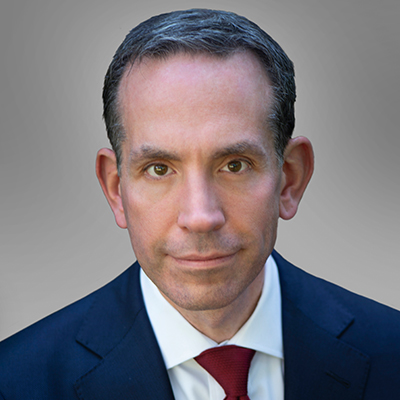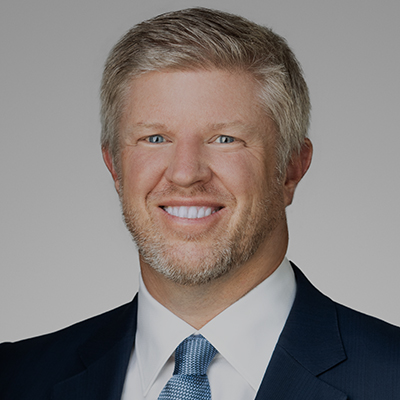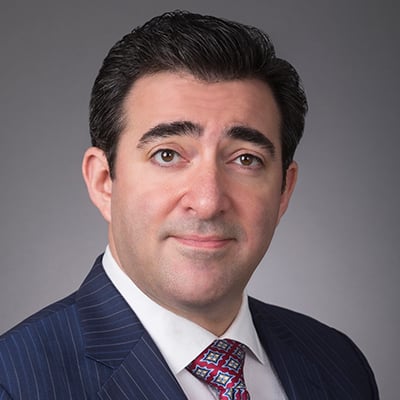Taking Stock of Kirkland’s Push Into Plaintiff-Side Contingency Fee Litigation
Kirkland has scored more than $2 billion in recoveries in trials for clients for Huntsman, Motorola and TriZetto alone in the two-plus years since it announced a concerted effort to expand its plaintiff-side docket.
Be careful when you toss a nice round number out to a journalist.
Back in July 2019 when Kirkland & Ellis litigators announced they were betting on themselves by taking on more plaintiff-side contingency work, partner Jim Hurst told my predecessor Jenna Greene the aim was to “increase by ten-fold or more the number of contingency cases we’re taking on.”
When I sat down to talk about the progress on that front Friday with other members of Kirkland’s litigation department, Hurst’s partner Andrew Kassof was a bit more measured. Kassof, a member of the firm’s executive committee who also spoke to Jenna back when the firm announced the plaintiff-side push, said the growth of the practice has been “significant,” but admitted the “ten-fold” number Hurst tossed two years ago was a bit off the cuff.
“I remember when he said it when we were on the phone,” Kassof said Friday. “I said to him, ‘Where did that come from?’”
“He said, ‘Wouldn’t that be great?’ and I said ‘Yeah, it would.’”
The effort to pin Kassof down on the “ten-fold” issue reminded me of that classic scene in “Cool Hand Luke” where Paul Newman’s character bets his prison-mates he can eat 50 eggs. When pressed later why he committed to eating 50 eggs, Newman’s character says: “I thought it was a nice round number.”
Eggs and round numbers aside, Kassof did have a couple of concrete numbers concerning the firm’s plaintiff-side work at the ready. Since Kirkland announced its plaintiff-side push, Kirkland lawyers have nabbed Litigator of the Week honors four times on plaintiffs’ cases. Those wins include three cases that resulted in more than $2 billion in recoveries for plaintiffs.
Last October, the firm secured more than $600 million for Huntsman International after arbitrators found Albemarle Corp. defrauded their client during a 2014 sale of a pigments business and breached the contract under which it was sold. In October 2020, the firm scored one of the largest trade secrets verdicts in U.S. history when a New York federal jury awarded their client, insurance claims processing software company TriZetto, $854.5 million in total damages. Kirkland litigators scored another 9-digit trade secret verdict for client Motorola Solutions in Chicago federal court in February 2020, sticking Chinese rival Hytera with a $765 million verdict.
“The reality is that the plaintiff-side practice is and probably always will be a very small fraction of our overall litigation,” Kassof said Friday. But he added that it’s a “significant” and “growing” portion of the firm’s overall litigation docket. He and his partners Adam Alper and Mike De Vries, who handled the TriZetto and Motorola matters, and Mike Williams, who handled the Huntsman matter, discussed the mechanics of how the firm decides to take a case on contingency and what they think are some of the benefits beyond the financial upside.
Kassof said that it’s up to the partners handling a matter to decide whether or not they think it’s appropriate for the firm to take on contingency and then to bring it to firm leaders. Kassof says after a case is pitched, a senior litigator or two is brought on to do what he calls a “Red Team analysis.”
“We basically take a lawyer hat off and put the investment banker hat on,” Kassof said. He said the senior partners, who are often specialists in the underlying area of litigation, can take a week or two to vet the matter and ask the lead partners any questions they want or need to assess the strength of the case and whether it’s a good investment for the firm. Kassof says the extra vetting and the resulting up-or-down call on whether to take the case on contingency by the firm free the partners who are handling the case to focus on the case rather than the underlying economics.
“Their mind is free to focus on what their job is, which is to go get a successful result for the client without worrying about the firm investment,” Kassof said. “That’s our responsibility.”
Williams, whose commercial litigation has traditionally focused and on more defense-side billable work, said aligning the firm’s interest with plaintiff-side cases has felt like “a true partnership” with clients.
“You really do feel that you’re working hand in hand with the client to achieve a goal. And we work toward that on all cases. But this eliminates or ameliorates some of the problems with rates,” he said. “It removes friction from your representation in a way that allows you to be a better trial lawyer, and makes it more likely that you’re going to win those cases.”
Alper said that the move into contingency fee work also has allowed the firm to take on some clients who might not have been able to afford Kirkland rates under traditional hourly billing arrangements. He said that’s been a benefit for the firm as well as “for companies who have real problems who’ve been wronged out in the marketplace.”
De Vries added there’s an aspect of “value creation” for clients to many of the cases Kirkland has taken under the program. “You can handle a case that’s going to bring value to your clients in a way that other kinds of cases may not,” he said. He added that it’s important to evaluate a case based on its “long-term profile” to make sure the result can hold up to deliver value to a client.
That point brings me to the fourth contingency case the firm took home Litigator of the Week honors: Back in 2019, a Delaware jury awarded Kirkland client Parthenon Capital Partners $82.1 million in a fraud case against Express Scripts Inc. and United BioSource Corp. tied to their 2013 sale of a business to Parthenon. The Delaware Supreme Court reversed the verdict based on a faulty jury instruction, and the firm is preparing to retry the case later this year.
“We’re arm in arm with the client all the way through to the end,” Kassof said. “We’ve got not just the competitive incentive and the client result incentive, we also now have an economic incentive to drive to the result that they’re looking for.”
“Our view is that we’re going to be right a lot more times than we’re wrong and we’re going to win a lot more times than we lose,” he added.
Kassof pointed to an additional benefit of the growth in contingency fee work: The sorts of creative fee structures the firm has developed on the plaintiff side have allowed its lawyers to be equally creative and flexible on the defense side. “What we can say is ‘You pick how you define a successful result’ and we’re going to bet on our ability to drive that outcome for you.”




